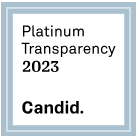Rx for Food Security
/You are what you eat . . . an apple a day keeps the doctor away . . . breakfast is the most important meal of the day . . .
Everyone has heard these adages at some point in their lives, and we generally don’t think much of them. But there is a lot of truth to these old sayings and healthcare providers are beginning to take them seriously.
Why? Because we’ve learned that when people don’t have enough to eat, can’t afford to buy healthy food, or don’t have access to fresh fruits and vegetables, it can affect their health for the rest of their lives. One of the best ways to ensure healthy living is to make sure everyone has enough to eat, from infancy through old age and every day in between.
We know that a good diet is linked to good health, which is why healthcare providers are beginning to make food insecurity screening and food assistance referrals a part of patient care visits. Recent research shows that not only is a doctor’s visit a good place to screen for food insecurity, but people are more likely to use food assistance if they see it as part of their healthcare regimen.
Unfortunately, very few medical school curriculums incorporate education around nutrition or food insecurity, leaving many doctors, nurses, and healthcare practitioners unsure of where to begin. What is needed is a curriculum to teach medical professionals what to look for, how to talk about it, and what the next steps are for their food insecure patients.
This is exactly what San Diego Hunger Coalition and Sharp HealthCare have developed: a 4-part Continuing Medical Education course, available online for free to medical professionals and the general public.
In the course, you can expect to learn:
1. What food insecurity looks like and how it is linked to health outcomes.
2. How to have a sensitive conversation about a person’s basic needs and how to find out if they are food insecure.
3. What to do to connect someone with food assistance and what resources are available.
4. How to know if your efforts are successful and how you can advocate for hunger relief.
It’s not enough to simply make food assistance available, we must make it easy to access. Innovative solutions like this are bringing us closer to our vision of a San Diego County where everyone has enough to eat.










